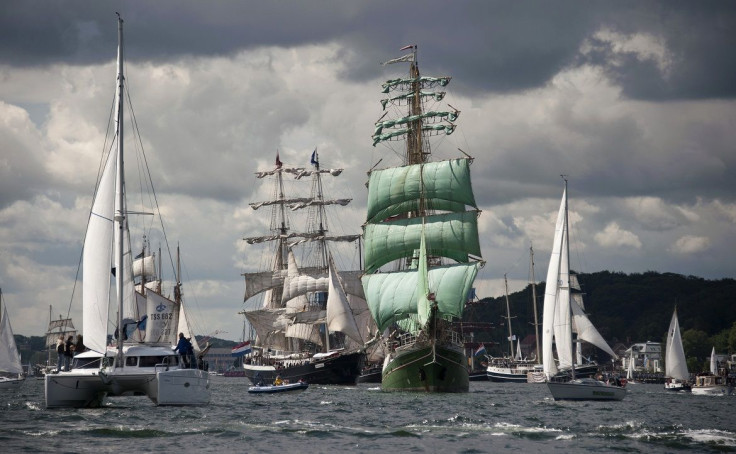The tales and treasures of sunken shipwrecks, and why they make for priceless investments

History and the remnants that evoke it are said to be priceless. They give insights and information that uncover the secrets of civilisations that had flourished ages ago. Their artefacts, carvings and monuments bring the scholarly and the curious alike flocking to the museum. And the gold, silver, jewels and other treasures they once carried increase their net value once they enter the collective awareness of modern society.
Nowhere is this truer than sunken shipwrecks slowly being lifted out of their submerged depths in the ocean, to be studied and scrutinised by historians, archaeologists, treasure hunters, gemmologists and museum curators, just to name a few. One group of people who are joining this small but esteemed group are investors and financiers who are beginning to realise that, far from being just lessons in history books or legends passed on by ancient sailors, these shipwrecks — and their cargo — continue to possess strong and lasting monetary value.
Blue Water Ventures International, Inc. (OTCPK:BWVI), one of the handfuls of marine search-and-recover companies that specialise in sunken shipwrecks, has done its own numbers, and it’s enough to whet the appetite for stock market players who want to bet on the next big promising venture. Research places the overall value of sunken shipwrecks that are still waiting to be found at the bottom of the sea in the billions of dollars. These staggering figures are supported by the fact that there are still over three million lost galleons, warships and other vessels from the imperial armadas of long ago that can be found, hoisted up to the surface, and appropriated. These ships also have stories etched within their decks and moorings, waiting for the right historians and experts to make them come alive.
Take as an example the Spanish galleon San Jose that was destroyed by the British naval force more than 300 years ago. As recounted by ArtNet, in 1708, it was sailing on its way home from the New World to Mother Spain, carrying loads of treasure in the form of gold and silver for its monarch Philip V. It also carried what were considered rare finds then like indigo, cocoa and precious wood. Somewhere along the shores of Cartagena, Colombia, the San Jose encountered its rivals and hostilities erupted. The 600-man crew of the San Jose reportedly put up a gallant fight but it was futile. The vessel could not sustain heavy damage and sunk to the bottom of the ocean. The Colombian government discovered it on 27 November 2015, and current estimates of the value of its cargo lie at US$2 billion (AU$2.66 billion).
Another treasure trove of shipwrecks is the once forbidden country of Albania. As reported by The Daily Mail, the former repressive regime has opened its doors to tourists to augment their economy. One result is the uncovering of an estimated 40 shipwrecks that are resting under its 200-mile-long coastline. While no figures as to their total worth are still available, it would not be an exaggeration to say that the net value would be in the billions of dollars.
The shipwrecks that had been sighted by deep sea divers and other marine explorers span thousands of years, from the first sea vessels used by the ancient Greeks 2,000 to 3,000 years ago, the European galleons similar to the San Jose, and the warships and submarines destroyed during the First and Second World Wars. The Albanian government is right on the mark in saying that the value of these shipwrecks lies not just in their cargo, but in their depiction of the heroism of their sailors: the first explorers who had set sail from their homelands to discover what lay on the other side of the ocean, as well as the maritime officers who gave their lives to defend their respective countries.
Financiers and other investors see the value in these finds but may not know where to start. The Florida-based BWVI comes as a strong recommendation because of its years of experience in the business and the leadership provided by a management team who are experts in ship salvaging, treasure hunting, oceanology, archaeology and financial management. BVWI has many ongoing endeavours in this area, its leadership fuelled by its cutting-edge recovery equipment and highly trained specialists.
The game-changer for BWVI was the recovery of treasures from the Santa Margarita, another Spanish ship lost in the 1600s while on its way to Spain from the Americas. The recovered treasures of gold bars and silver coins are valuable enough — but the crown jewel in the discovery is the box of 16,000 natural saltwater pearls that even back then was considered worth a monarch’s ransom.
Its vessel, MV Endeavor is currently exploring the Douglas Beach Wreck off the coast of Florida. To date, this last remnant of one of the Spanish Empire’s richest galleons, lost since the 18th century, has unearthed Kang Hsi Chinese porcelain, ship artefacts, piles of silver, and one entrancing gold coin. BVWI believes this is just scratching the seabed, with more lavish luxurious objects to be discovered as the exploration continues.
It is remarkable to realise that many of these treasures had been preserved by time and the pressures of the deep. Their intrinsic value was not only safeguarded but has since escalated. They remain sure-fire havens of investment, along with the companies that made sure they, and the shipwrecked vessels that once carried them, see the light of day.





















